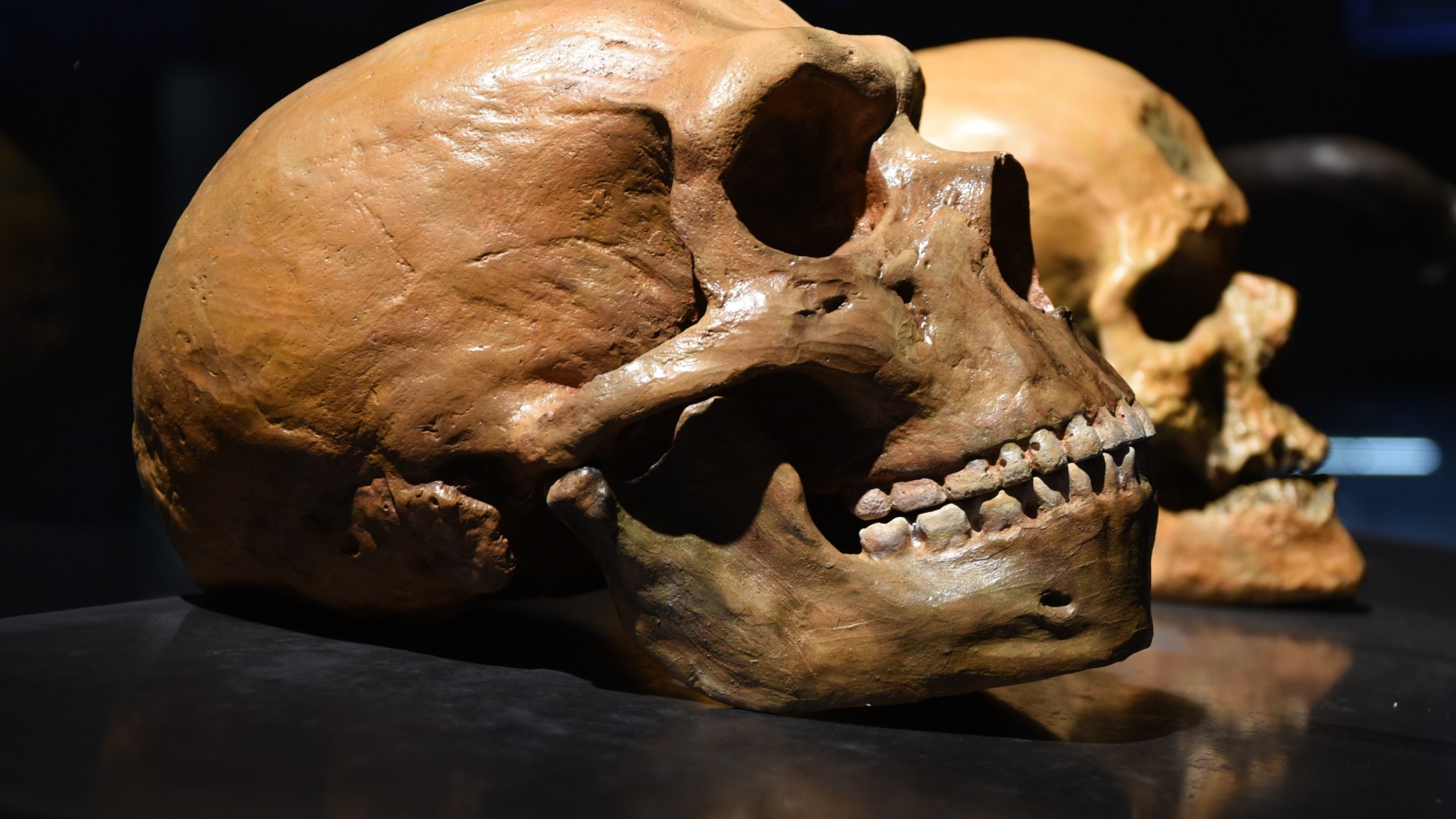Humans and Neanderthals mated 250,000 years ago, much earlier than thought
A comparison of the genomes of a Neanderthal who lived 120,000 years ago in Siberia with those from modern humans in sub-Saharan Africa has revealed insight into the migratory and interbreeding history of both species.
Neanderthals and anatomically modern humans initially interbred 250,000 years ago, a date that is far earlier than previously thought, a new study suggests.
Until now, Neanderthals and anatomically modern humans (Homo sapiens) were believed to have first interbred earlier than 75,000 years ago, according to a 2016 genetic analysis in the journal Nature. However, a new analysis, published Oct. 13 in the journal Current Biology, has revealed that one group of Homo sapiens from Africa interbred with Neanderthals in Eurasia around 250,000 years ago.
This group of humans died out, but left a genetic footprint in the DNA of Neanderthals that descended from this interbreeding event — with 6% of the genome of a Neanderthal discovered in Siberia containing human DNA. Some sub-Saharan populations of anatomically modern humans also inherited Neanderthal DNA when groups of humans who had interbred with Neanderthals migrated back into Africa.
"The enhanced understanding derived from this research will enable us to annotate Neanderthal DNA in modern human genomes, as well as the reverse process, with greater accuracy," Michael Dannemann, an associate professor of evolutionary and population genomics at the University of Tartu in Estonia who was not involved in the research, told Live Science in an email.
This will help scientists predict how interbreeding events impacted the physical characteristics of both groups and improve our understanding of the migration patterns and interactions between modern humans and Neanderthals, he said.
Related: Scientists finally solve mystery of why Europeans have less Neanderthal DNA than East Asians
In 2020, the idea that most modern human-Neanderthal interbreeding happened in Eurasia was contested by a study in the journal Cell that found Neanderthal DNA in human genomes in sub-Saharan Africa. However, the origin of this DNA was unknown and the analysis was limited to populations with mainly Niger-Congo-related ancestry.
Get the world’s most fascinating discoveries delivered straight to your inbox.
In the new study, the authors compared the genome of the 122,000-year-old "Altai Neanderthal" from Siberia with those of 180 people from 12 modern sub-Saharan Africa populations. They then developed a statistical tool to uncover the origins of the Neanderthal DNA in the modern human genome.
The statistical analysis looked at genes shared by both humans and Neanderthals and tried to determine whether certain alleles, or genetic variants looked like they were of a Neanderthal origin but found their way into modern humans or vice versa, said Alexander Platt, study co-author and senior research scientist in the Department of Genetics at the University of Pennsylvania, told Live Science.
The authors found that all of the studied sub-Saharan genomes contained Neanderthal DNA, which mainly came from this 250,000-year-old human-Neanderthal interbreeding event. Some sub-Saharan populations also had Neanderthal DNA in up to 1.5% of their genomes, which was inherited from humans who had migrated back into Africa.
In addition, the authors found that most of the human DNA in the Neanderthal genome was in non-coding regions (meaning DNA that does not code for proteins) implying that human genes had been selected against during Neanderthal evolution. What's more, Neanderthal DNA was missing in the human genomes at the same place.
"That means that neither one [region of DNA] is particularly better than the other, they're just bad matches for the rest of the genome," Fernando Villanea, a population geneticist at the University of Colorado Boulder who was not involved in the research, told Live Science. "I think that was really cool, walking away from this idea of, oh, the Neanderthals are inferior in some way, to this idea that we're just two different species and we evolve for different things in our genomes," he said.
The authors hope the current findings will help answer other questions about human evolution.
"It'd be really cool to learn more about the genome of that population that existed 250,000 years ago," and compare it to the genomes of modern humans, Sarah Tishkoff, senior study author and professor in genetics and biology at the University of Pennsylvania, told Live Science. "Maybe that'll tell us something interesting about human evolutionary history or adaptation."
Editor's note: Updated at 3 p.m. EDT to note that the Altai Neanderthal is from Siberia, not Croatia.

Emily is a health news writer based in London, United Kingdom. She holds a bachelor's degree in biology from Durham University and a master's degree in clinical and therapeutic neuroscience from Oxford University. She has worked in science communication, medical writing and as a local news reporter while undertaking NCTJ journalism training with News Associates. In 2018, she was named one of MHP Communications' 30 journalists to watch under 30.



